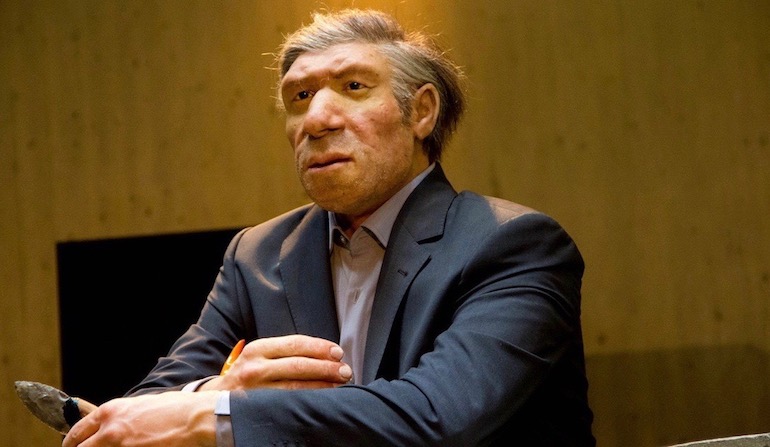 Human Origins
Human Origins
The Evolution of Neanderthal Spin


An article in the digital magazine Aeon looks at the evolution of Neanderthals. Not their evolution in geologic time, but the evolution of how evolutionists and science popularizers depict them.
The article assumes modern evolutionary theory, so it comes with the usual raft of unsupported pro-evolution claims typical of mainstream science journalism. But it is refreshing for frankly spotlighting how the “facts” about Neanderthals have evolved over the years.
To see, click on the Aeon article and compare the recent depiction of a Neanderthal family at the top of the article to the Edwardian era newspaper depiction of a Neanderthal a few paragraphs down. In the recent depiction, from a museum exhibit, the Neanderthal family looks intelligent and civilized. A couple of them are even gazing off into the middle distance, as if working out something profound. In contrast, the stooped and uber-hairy Neanderthal in the newspaper clipping from a century ago looks like he could successfully blend in with a community of tolerant gorillas. In the clipping, the caption under this artist’s conception confidently states, “An Accurate Reconstruction.”
An Accurate Fantasy
An accurate depiction of a Darwinist fantasy: yes. An accurate reconstruction of an actual Neanderthal: apparently not. And it’s not just that scientists and their hired artists made their best guess based on what they knew back then and simply got it wrong. As Aeon notes of scientists’ understanding of Neanderthals 110 years ago, even by that point “it was no longer possible to argue that he and his kind were closer to nonhuman animals than to living people.”
So why did they often depict them as ape-like? Darwinism desperately needs to fill in a yawning chasm in the fossil record between the ape-like and the human-like. At one point many hoped Neanderthals could serve as a crucial link in that lengthy stretch of missing chain between the fully ape-like and the fully human. Coached by the Darwinian paradigm, many assumed that Neanderthals did. But those uncooperative cave men refused to stoop, got the big head (average brain size slightly larger even than modern humans), and got caught red-handed in the fossil record behaving in various ways like intelligent humans.
Neanderthals even appear to have had children with Homo sapiens, with something like one to three percent of their DNA remaining in most modern humans outside of sub-Saharan Africa.
If evolutionary theory is true, there were millions of intermediate hominids between our nearest fully ape-like ancestor and ourselves. That long chain is missing, a fact that has put enormous pressure on proponents of evolutionary theory to replace the missing chain with imaginative drawings, museum recreations, and verbal sleights-of-hand. To learn more about this, see Jonathan Wells’s excellent Zombie Science: More Icons of Evolution, pp. 74ff.
Photo: An exhibit from the Neanderthal Museum in Mettmann, Germany, by Clemens Vasters, via Flickr (cropped).
